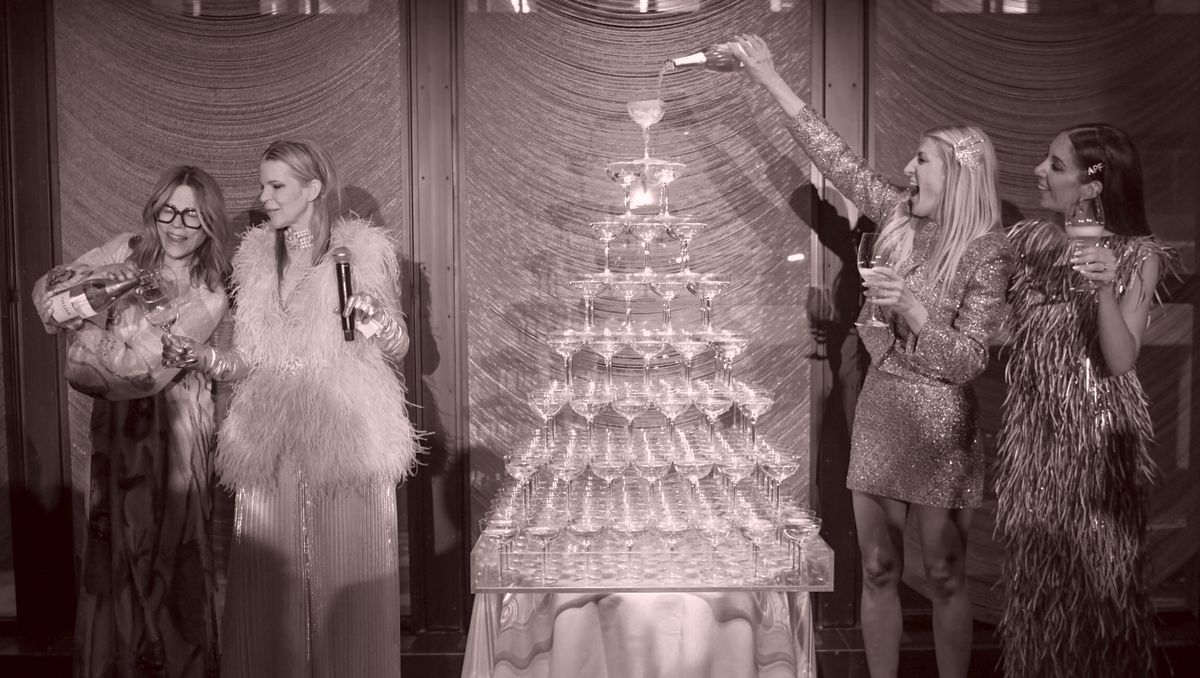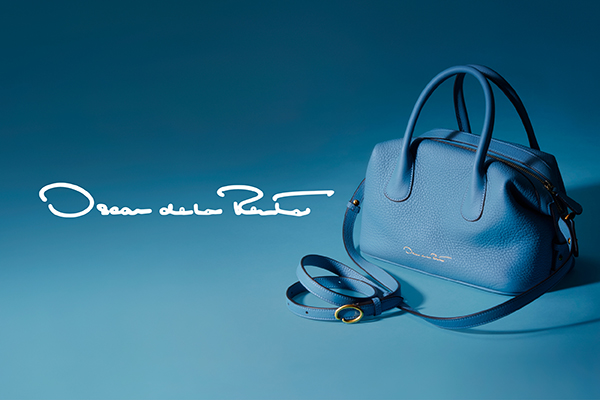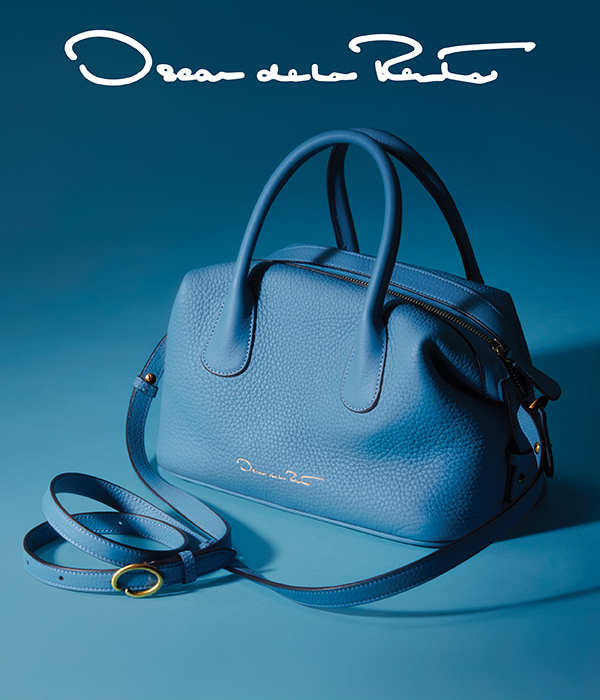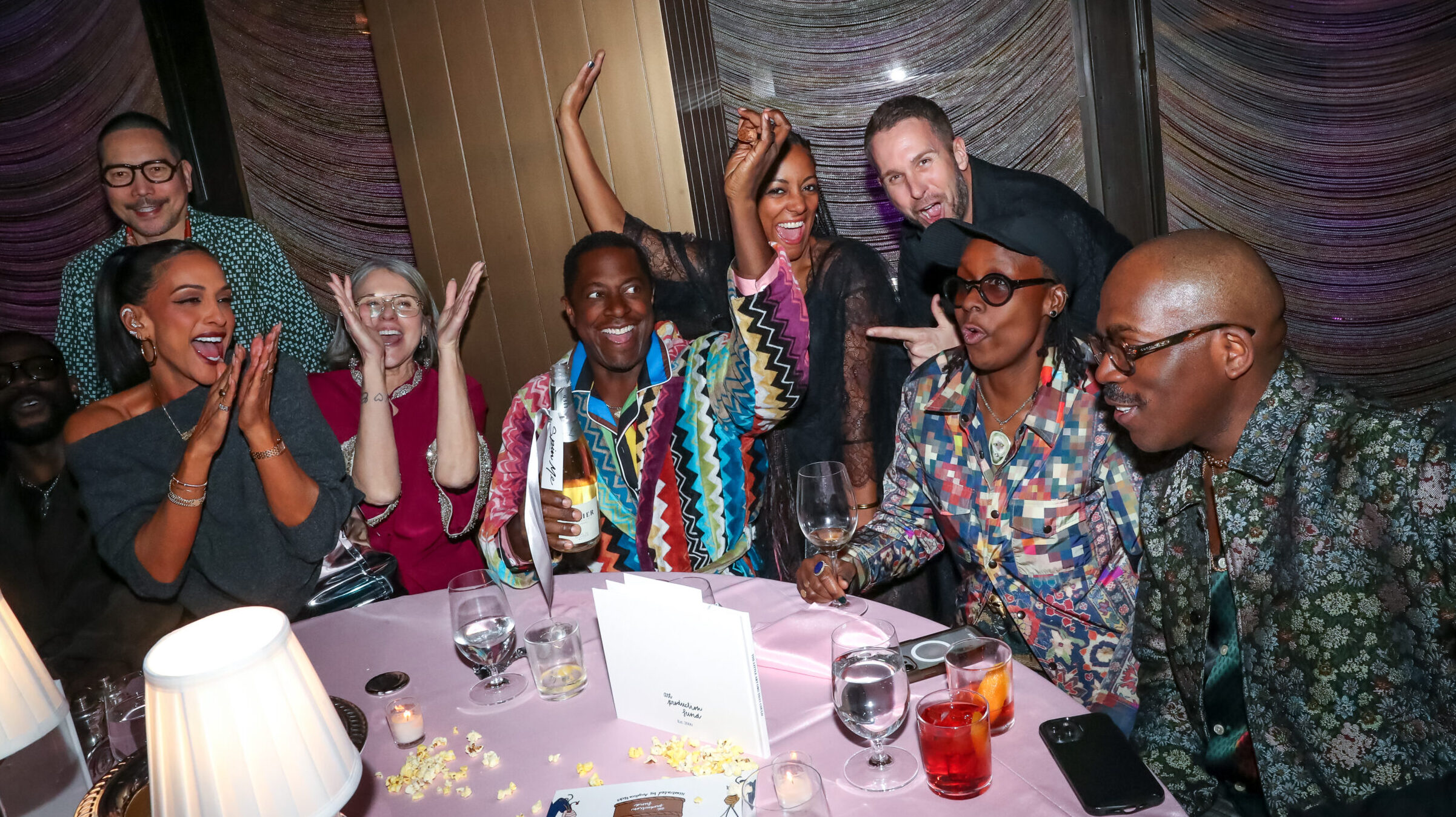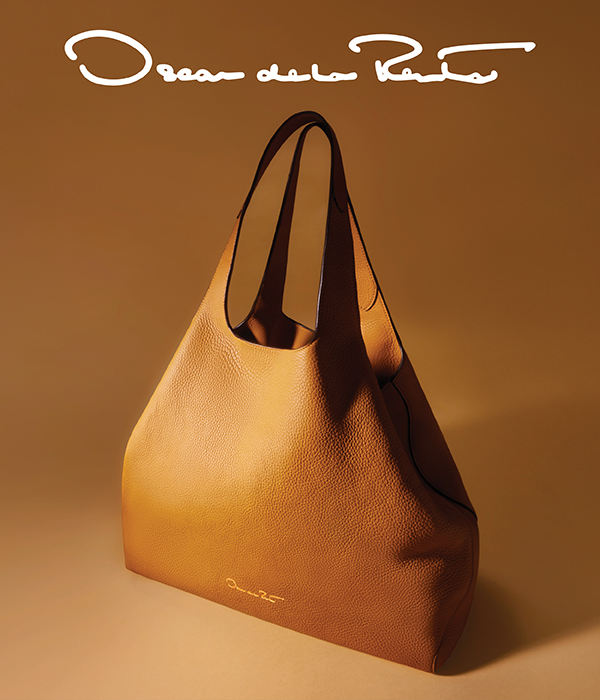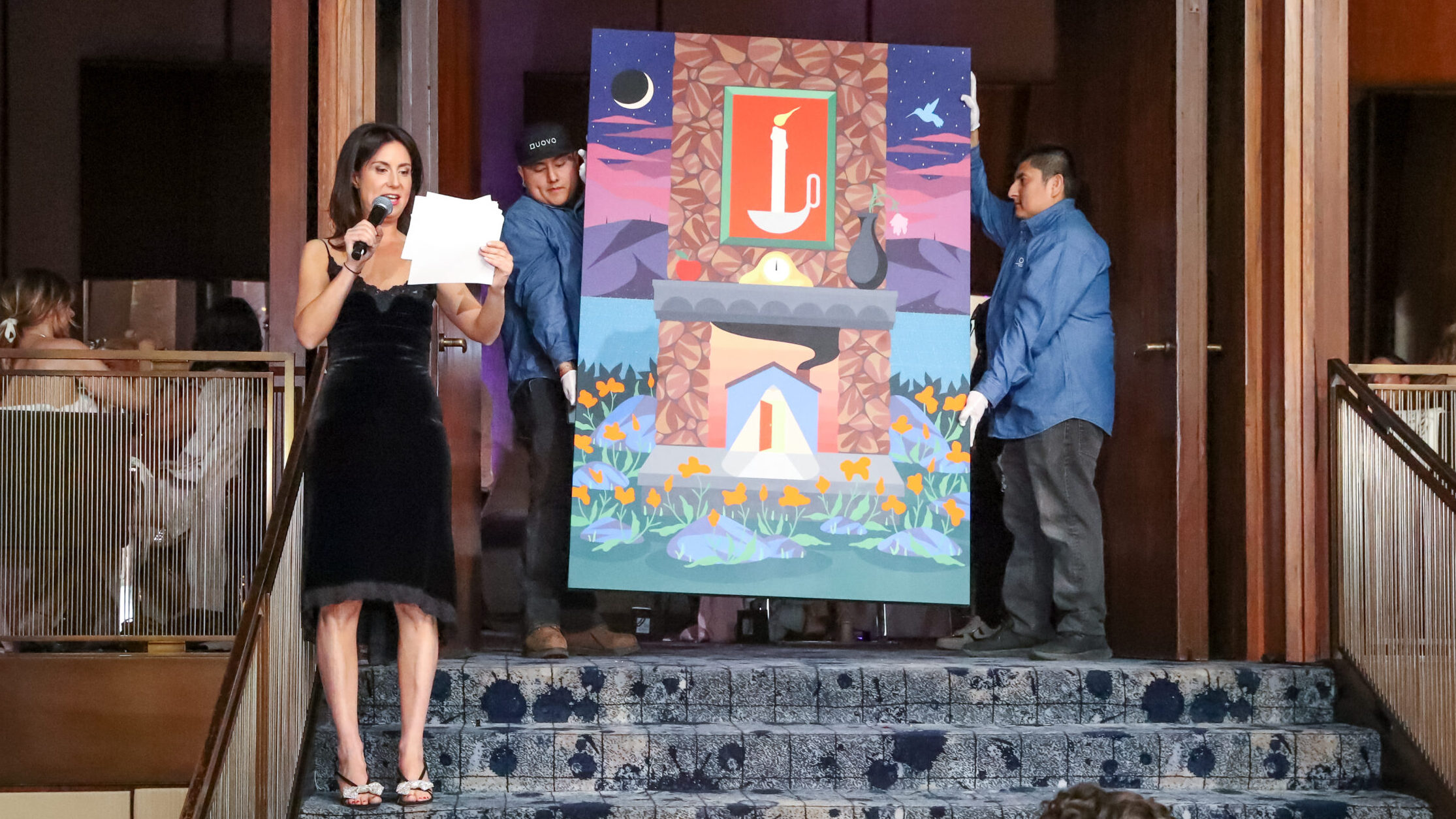Welcome back to Wall Power. I’m Marion
Maneker.
I’m going to hand over the keys to the party bus to Julie Davich in a minute. This week, she went to the Art Production Fund’s 25th anniversary gala—an annual collision of the art and fashion worlds and Manhattan charity circuit goers. Julie’s going to get you inside. I’ll apologize in advance: She didn’t grab a swag bag for you. So much more detail below.
Just a reminder that Julie is on her way to Maastricht Sunday
night. If you have recommendations at TEFAF or just want her to come by and say hello, you can reach her at JDavich@puck.news.
|
|
|
A MESSAGE FROM OUR SPONSOR
|
|
|
But first I’ve got a few things to
address…
|
- The Gertrude Abercrombie train is leaving the station: While everyone was getting into their sleepwear best for the slumber-party-themed Art Production Fund gala, Rago was holding an auction that included Gertrude Abercrombie’s Owl Trainer No. 2, from 1947. The painting was exhibited at Marshall Field’s, the old
Chicago department store, during the year it was made. (Yes, department stores used to sell art.) But it did not find a buyer until 1995, long after Abercrombie had died. This week, Rago estimated the small-but-not-tiny work (it’s the tiny ones that really drive the buyers wild) at $200,000.
Julie chronicled the growth of the Abercrombie market here
recently, but ARTDAI’s data tells a slightly different version of the story. The first big sale of $364,000 of Abercrombie’s art, in 2021, sparked a frenzy the following year, when more than $5 million worth was sold at auction, but mostly in small shops. Sales then settled down in the two years that followed, to $3.7 million each year. During the past four years, average prices remained steady at around $160,000, even though a new record price was set for the artist when Bonhams sold Silo
at Aledo, from 1953, for $864,000—almost double the previous high prices.
Whenever we see a big new price, I look to the next few sales for market clues. Auction house personnel often start looking for comparable work while collectors who own other works by the artists get curious, themselves. The rest of the market is also paying close attention: They’re looking for what I call a confirmation price, usually a sale within six to 18 months that falls anywhere above halfway between the
old record and the new record—in this case around $600,000.
We didn’t have to wait six months, because Owl Trainer No. 2, which contains some of Abercrombie’s signature elements—a sickle moon, a lone female figure, maybe some mysterious nocturnal animals like black cats or owls—sold for $825,000. That should tell us that demand for the Chicago-based “jazz witch” is very real, and her prices are likely to have achieved a new plateau. So far this year, nearly $1.5 million of
Abercrombie’s art has sold, with the average price doubling to just under $300,000.
- Bonhams sells Lynda Benglis wall piece for $445,000: Also on Wednesday, Bonhams held a sale in Los Angeles where a small wall piece by Lynda Benglis, Virunga from the Volcano series, made in 1993, was
estimated at $40,000 and sold for $445,000 with fees. The price isn’t as noteworthy as the fact that there were 17 bidders. There have been half a dozen Benglis works sold for prices in the $400,000 range, and two more works sold three to four years ago—one for over $800,000 and one for just over $1 million. Those were
much larger works, sometimes 5 or 6 feet in size. Virunga is less than half that size, which partly explains the low estimate. This is good news for Benglis’s market, which saw far fewer public sales last year than in the previous few years as momentum built on the advocacy of secondary market dealers like Sukanya Rajaratnam.
|
The data quoted above is provided by ARTDAI. If you want access to their data for
yourself, or your firm, you can learn more about the service here. Puck will receive an affiliate fee from any subscription.
|
|
|
Inside New York’s grandest example of midcentury modernism, as Art
Production Fund celebrated its 25th anniversary with a semi-risqué slumber party that coaxed the art and fashion worlds to get into bed together.
|
|
|
On Wednesday night, Art Production Fund celebrated its 25th anniversary with its
annual bash at The Grill—the Carbone-ified site of the old Four Seasons in Ludwig Mies van der Rohe’s Seagram Building. The gala united the fashion and art worlds, and blurred the lines between racy and drowsy with its slumber party theme and playful Truth or Dare dress code. APF easily packed the room with 300 well-heeled attendees; individual tickets were sold (by invitation only) via a password-protected website for a relatively reasonable $1,500 or $2,000, with tables going
for $15,000 or $25,000 a pop. “We want to engage the next generation and get their buy-in to philanthropy,” APF’s executive director, Casey Fremont Crowe, told me.
Art Production Fund was founded in 2000 by Yvonne Force Villareal and Doreen Remen, with the mission of “commissioning and producing ambitious public art projects.” The duo’s perhaps best-known project, Elmgreen & Dragset’s Prada
Marfa, dates back to 2005 and marked a defining moment in the organization’s history. “Here’s to 25 years of Art Production Fund—and many, many more,” Villareal said as she and Fremont Crowe poured bottles of Lallier champagne (sponsored, of course) onto a pyramid of crystal coupes.
|
|
|
A MESSAGE FROM OUR SPONSOR
|
|
|
In 2016, Villareal and Remen handed the reins of APF to Fremont Crowe and
Kathleen Lynch, the director of operations, who wore a custom silver fringe dress by Lein to honor APF’s silver anniversary. One of their first projects at the helm, in 2017, was Jeff Koons’s 45-foot-tall inflated Seated Ballerina on the plaza at Tishman Speyer’s Rockefeller Center—17 years after Jerry Speyer put the artist’s monumental flower puppy there. It was the beginning of an ongoing partnership between APF and Tishman
Speyer.
The party’s Truth or Dare dress code, a risky idea on paper, actually played out pretty tamely in the room, inspiring lots of PG-13 sleepwear: pink satin, black lace, feather trim, and silk sleep masks worn as headbands for the ladies; robes and smoking slippers for the gents. On the restaurant’s mezzanine, guests found a row of frilly pink child-size beds with APF-branded teddy bears on top. Bottles of pink champagne on each table instructed, “Spin Me.” The venue’s iconic pool
had been drained and filled with white satin pillows. Artist and choreographer Madeline Hollander staged an Eyes Wide Shut–esque performance piece with dancers wandering between the tables in silvery silk robes.
Saks was the presenting sponsor for the fourth year in a row, and Gucci, Chanel, Giorgio Armani, Max Mara, Fforme, Tod’s, and Stacey Bendet Eisner (of Alice + Olivia) each hosted a table. (So did Gagosian gallery.) Plenty of designers
filled seats, including Tanya Taylor, Brian Atwood, Marina Larroudé, Azeeza Khan, Adam Lippes, Nell Diamond, and Cynthia Rowley, who I overheard saying that her one-off fuzzy puppy heels had been such a hit that she might produce them.
|
There wasn’t a huge turnout from the usual New York art crowd except some artists
themselves, including Marilyn Minter, Sheree Hovsepian, Lucy Bull, and Mickalene Thomas. There was also a bevy of stylists, influencers, socialites, and American royalty, namely Lili Buffett, Nicky Hilton Rothschild, and Ivy Getty. It was the kind of scene in which, when you ordered an espresso—as my seatmate, the artist Greg Ito, did—the waitress reflexively
brought an espresso martini instead.
|
Private Funds, Public Art
|
Many of the artists whose work APF has displayed at Rock Center in recent years
were circulating at The Grill on Wednesday, including Melissa Joseph (who recently won the Brooklyn Museum’s Uovo Prize), Jake Clark, and Shantell Martin, who was seated next to the head of Rockefeller Center, EB Kelly. “APF brings an incredible caliber of artists who have gone
on to do incredible things,” Kelly told me. Meanwhile, the mostly bicoastal APF has its sights set on national expansion. They just completed a project in New Orleans with Maia Ruth Lee, and are working on projects with EJ Hill and Martin Gonzales in Dallas, and Kennedy Yanko in her hometown, St. Louis.
|
|
|
Fremont Crowe started working at APF as a teenage intern, and fittingly, the party
was a full Fremont family affair. Among the guests were her parents, Shelly and Vincent, who famously met in Warhol’s Factory and raised their young daughters in its midst. Casey’s sister, Austin, produced the soiree with her company, Fremont Blue Events, complete with lipstick-scrawled compacts in lieu of placecards, as well as custom-printed napkins, matchbooks, and hotel-style slippers. As I took it all in, I couldn’t help
but wonder whether a nod to restraint might have boosted the fundraising haul. The event raised $700,000, down from last year’s iteration, which pulled in $850,000.
|
Charity auctioneer Sara Friedlander soliciting bids for Greg Ito’s painting, Home
is Where the Light Stays (2025), held up by Uovo art handlers. Photo: BFA/Neil Rasmus
|
Since art is the point here, there was also a live auction. Christie’s
deputy chairman of postwar and contemporary art, Sara Friedlander, took the gavel. “The theme of tonight is Truth or Dare,” she said. “So, here’s a truth: No one sleeps in what they’re wearing tonight.” She then elicited bids from the room for works donated by Ito, Hiba Schahbaz, Joel Gaitan, Joel Mesler, and Katherine Bernhardt.
I was regaled with tales of last year’s partygoers chugging
champagne straight from the bottle well beyond midnight, but this year the crowd was satisfied to call it a night after dessert—caramel popcorn sundaes and French toast sticks. Perhaps the prevailing mood of national uncertainty just could not be downplayed. Friedlander tried to land a tariff joke (tough with any crowd), and Fremont Crowe, in her speech, acknowledged the devastating fires in L.A. that had affected so many artists and collectors. The evening was a welcome distraction from all
that, but struck a couple of artists I was chatting with at the end of the night as, maybe, not reading the room. As one of them said: “The vibe this year felt off.”
|
Art and real estate are also intimately intertwined: Many
collectors begin, after all, with a substantial real estate purchase. The old joke is that you know you’re a collector when you keep buying art even after you’ve decorated your new home. This week, the Financial Times caught us up on a long-developing trend where high-end real estate dealers are increasingly decorating apartments and homes for potential
buyers.
The decorated places, which the FT dubs “super turnkey,” seem to sell the fastest and at a premium. (You’ve got to pay the firms that do the design and find the furniture and art.) This follows a trend in which designers have been selling their homes with all of the furniture and decorative objects as a complete package. Of course, here the designers are trying to do something different from the hotels that use art as an experience—they’re doing more than staging. They’re
sourcing from a range of stores and boutiques, trying to replicate a design that would have been put together over time. Or, as Brian Ludlow, who has been doing this kind of work in Los Angeles for years, told the FT: “We build a collection that feels like a journey in art that has taken time … informed by different references and periods.” Think of it like asking ChatGPT to decorate a home for you, then buying it.
Have a great weekend, everybody. I’ll be back on
Sunday night with more.
M
|
|
|
Puck founding partner Matt Belloni takes you inside the business of Hollywood, using exclusive reporting and
insight to explain the backstories on everything from Marvel movies to the streaming wars.
|
|
|
The ultimate fashion industry bible, offering incisive reportage on all aspects of the business and its biggest
players. Anchored by preeminent fashion journalist Lauren Sherman, Line Sheet also features veteran reporter Rachel Strugatz, who delivers unparalleled intel on what’s happening in the beauty industry, and Sarah Shapiro, a longtime retail strategist who writes about e-commerce, brick-and-mortar, D.T.C., and more.
|
|
|
Need help? Review our FAQ page or contact us for assistance. For brand partnerships, email ads@puck.news.
You received this email because you signed up to receive emails from Puck, or as part of your Puck account associated with . To stop receiving this newsletter and/or manage all your email preferences, click
here.
|
Puck is published by Heat Media LLC. 107 Greenwich St, New York, NY
10006
|
|
|
|


_01JPAC4409S028HTZ07ZXME49M.jpg)

